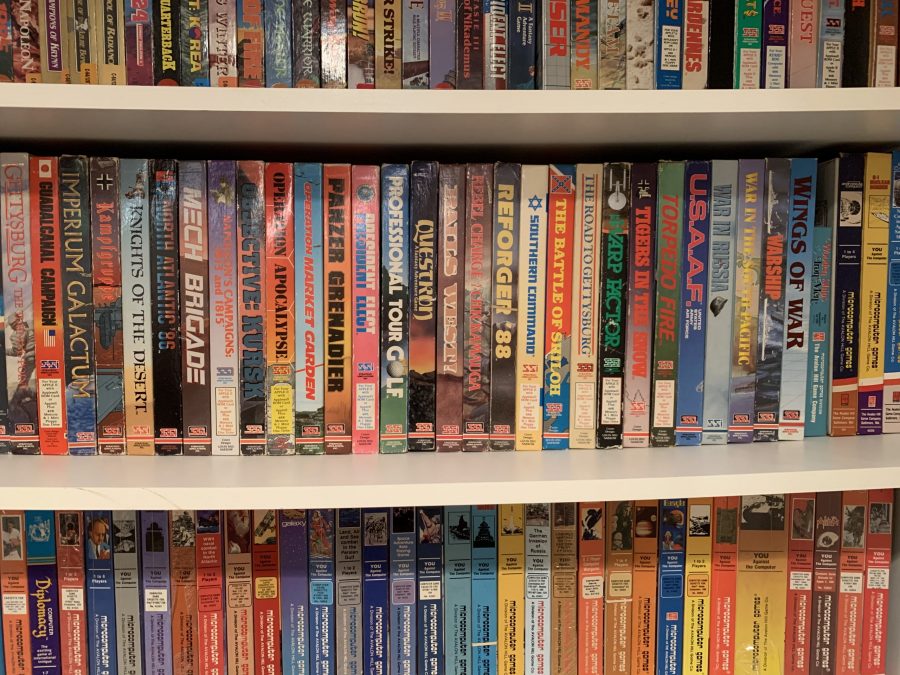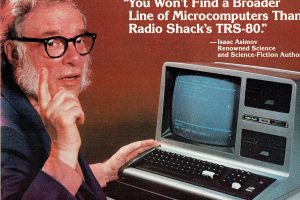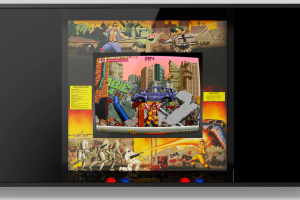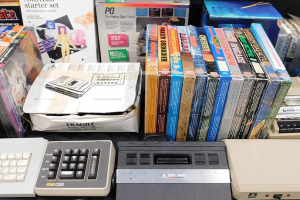After getting rid of my oversized video game and computer collection several years ago via an auction house, I’ve gotten asked occasionally about what I’ve kept or if I’ll collect again. I did end up keeping some items and I have been adding pieces here and there, albeit in a very different way than I did for the previous 40 years or so of collecting. It’s more personal and targeted now, and limited to just one room in our basement, where it will remain.
Of course, I still maintain several top of the line PCs, and have all of the latest major consoles and similar devices like smartphones and tablets. That will never change, as it’s important to me for a variety of personal and professional reasons to stay on top of the latest and greatest technology. This includes FPGA- and soft-based implementations of various systems, which helps cut down on the clutter, maintenance, and other issues associated with vintage systems, particularly vintage computer systems, that I’d otherwise have in my collection still (e.g., the Atari ST and Commodore Amiga series, where I can replace that functionality with MiSTer and MIST FPGAs; ZX Spectrum, which I replace with the ZX Spectrum Next FPGA; MSX series, which I can replace with MSXVR; ZX81, which I can replace with a kit computer that I can have fun building; modern Altari 8800 pro kit; and so on).
In terms of vintage computers, I’ve kept the following family of physical systems: Adam, Amiga 500, Amstrad CPC, Apple II/IIGS, Aquarius, Atari 8-bit, Atari STe, BBC Micro/Master, C-16/Plus/4, C-64/128, CoCo, CP/M (Bondwell 12, Zorba (broken); others also run), Dragon, Enterprise 64/128, JR-200U, Macintosh (classic), MC-10, PC DOS/Windows, PCjr, Spectravideo (SV-328), Tandy 1000, TI-99/4a, Tomy Tutor, TRS-80, and VIC-20. Most of those actual computers have limited accessories and flash drives (and related) wherever possible. I also have a decent sized boxed vintage computer game collection, but one where I only emphasize either the games that have interesting packaging or the more sophisticated RPGs, strategy games, and text adventures.
In terms of vintage consoles, I’ve kept the following family of physical systems: 3DO, Atari 2600, Atari 7800, Atari Jaguar, Bally Astrocade, CD-i, ColecoVision (and CollectorVision), Intellivision (and ECS), Odyssey2, and Vectrex. Although I wouldn’t exactly call it vintage, I do also have a launch PS3 so I can use real PS1, PS2, and PS3 discs, although like my PS4s, it’s a rather finicky system. This is rather more modest than the vintage computer stuff because most of the consoles run authentically enough via various emulation methods or with various multi-systems (especially when it comes to the rest of the classic 8-, 16-, and 32-bit systems) where bothering to maintain the original hardware is just not worth it. I have a very small selection of boxed games for these consoles, where again, flash carts and related are valued.
I do have various displays, although only one multi-use CRT, my original Commodore 1084S, which is a truly versatile monitor. Otherwise, it’s all modern LCDs/LEDs, typically interfaced via something like an XRGB-mini, RetroTINK 2X Pro, or OSSC.
So, it’s still a decent-sized collection, just nowhere near what I once had. It’s all mostly focused on what still feels best, where using the original hardware is generally preferable for whatever reason to emulation, be it FPGA- or soft-based.
Anyway, here are some photos in slideshow format. Enjoy:




















 Your total news and information resource for all things Science, Technology, Engineering / Mathematics, Art, and Medicine / Health.
Your total news and information resource for all things Science, Technology, Engineering / Mathematics, Art, and Medicine / Health.
Leave a Comment